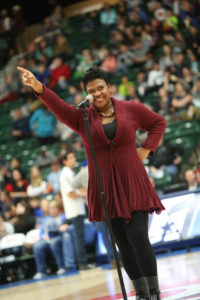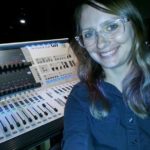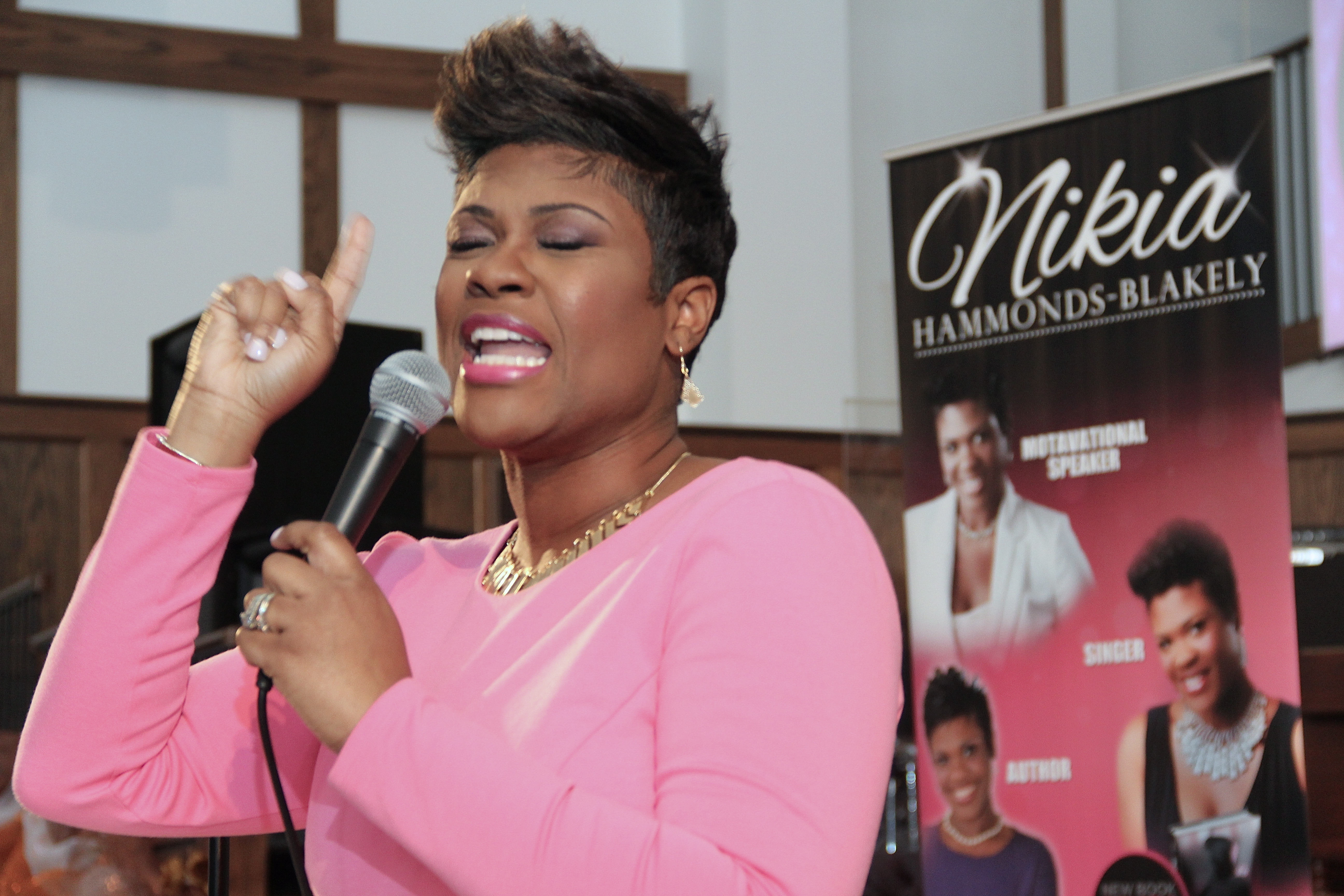One of my favorite things is seeing musicians embracing, understanding and using technology to further their artistic goals. I regularly do monitors, and I get so excited seeing when singers have successful soundchecks and go on to just nail the performance. I notice that time and time again singers struggle a little harder with wearing in-ears than most musicians do. I decided to use the resources I have close to me and talk to vocalists I know in the area. These are women I believe excel at what they do and also wear in-ears properly.
First I talked to Nikia Hammonds-Blakely. She is a local singer that I have the pleasure of working with regularly. She started performing in a choir at age ten which progressed to her performing as a solo artist in her teens. Her early influences were obviously gospel. As she got older singers such as Whitney Houston, Toni Braxton, and Celine Dion have become an influence. Her favorite style of song is a mellow love song.
When I started asking her about her experiences with in-ears, I noticed a how she hesitated. She has been using IEMS for three years and is still hesitant to say she is comfortable. Nikia uses Shure SE425 a dual driver generic in-ear. I asked her what her biggest struggle with in-ears was. To which she replied, “I’m a people person, I like to connect with people. I want to feel the room. I want to feel a vibe off the atmosphere.” She felt that she initially didn’t want to hear just the music, it made her feel as if she was in a recording studio and in her own world. She said she struggled at first to be able to describe what would help her still feel connected.
“I am a work in progress. I’m an artist. By no means do I have any tech-savvy-ness. . . I want to grow to the point where I know the science behind sound. So I can ask for what I need.”
The most exciting thing, as a monitor person, was to hear repeatedly her desire to know more about the technical aspects. The more she knows, the easier and faster she can achieve her perfect in-ear mix.
 “I used to hate them because I felt contained. I’m much more comfortable with it now because it allows me to hear my voice better and perfect my voice. When you can hear yourself better you can adjust yourself without going sharp or flat.”
“I used to hate them because I felt contained. I’m much more comfortable with it now because it allows me to hear my voice better and perfect my voice. When you can hear yourself better you can adjust yourself without going sharp or flat.”
Another interesting point she brought up was performance. She said her performance changed using in-ears. Before she relied on a lot of auditory cues for how engaged the audience was, now she is forced to open her eyes and make a connection. Her stage presence has changed. Her actions now are more deliberate. When she inserts her in-ears, it is as if she is now entering performance mode and is now there to bring her A game. The world of in-ear monitoring can get complex. Now there are cues, countdowns, and people calling songs or note changes all of which a singer could hear.
“In-ears is not just me listening to myself, or the band. It’s someone talking to me while I’m singing, distorted sounds, some sounds too fat; some are too soft. So you have to listen to those things and drown it out. You hear many more things than you did while just listening to wedges.”
As she grew more comfortable wearing in-ears she realized there was more than just going out there and singing.
“All that said, it is growing me. It is making me more aware of all the elements that have to come together to achieve a good sound. As a professional singer, you need to have an awareness of how one thing plays into another and the balance that is required to create this beauty that is music. ”
I always find it interesting what different singers want in their in-ear mixes. I feel like I’ve encountered a lot of singers who are timid with their requests. There is no wrong way to build a mix that helps you, the singer, give an incredible performance. When I asked Nikia what she liked in her mix she said herself, keys, whoever is carrying the melody, kick, click, audience mics. And what she calls the cherry on the top, reverb. She said, “reverb is like a filter on a camera or lip gloss on ashy lips. It just comes out a little prettier.”
 When I asked her if she had advice for techs, new singers, and fellow musicians, she warned that as professionals we forget how foreign and overwhelming it can be for someone who hasn’t worked in this professional world. Her specific advice for monitor engineers was,
When I asked her if she had advice for techs, new singers, and fellow musicians, she warned that as professionals we forget how foreign and overwhelming it can be for someone who hasn’t worked in this professional world. Her specific advice for monitor engineers was,
“Teach. Teach, the more you take a second to teach the more you will get out of them. In gospel music you have to be able to feel it, you have to be able to unplug from the technicalities and feel the audience and the message. It takes a certain level of confidence and being equipped on the front end to be able to do that.”
When I asked her if she had advice for new singers who are just starting out wearing in-ears she said,
“Talk to your engineers. Don’t be afraid to ask questions. I wish now I had asked more questions. I’m just now feeling more comfortable asking for what I need. Don’t feel intimidated by the engineers and people who know what you don’t know. You’ve got to learn from them and not be afraid to ask.”
That is the key for anyone coming up in the music business. Don’t be afraid to ask.
You can learn more about Nikia at:
 Aubrey Caudill: Aubrey lives in the Dallas-Fort Worth area and works as a freelance audio engineer. She currently works for several area wedding bands and runs monitors at The Potter’s House North Dallas. She is also a mother of two sons under ten.
Aubrey Caudill: Aubrey lives in the Dallas-Fort Worth area and works as a freelance audio engineer. She currently works for several area wedding bands and runs monitors at The Potter’s House North Dallas. She is also a mother of two sons under ten.
